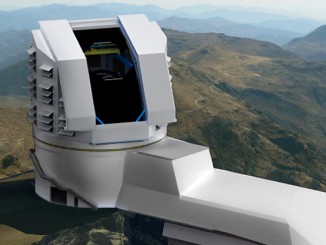
LSST




Galactic merger exposes supermassive black hole
Astronomers using the super-sharp radio vision of the National Science Foundation’s Very Long Baseline Array (VLBA) have found the shredded remains of a galaxy that passed through a larger galaxy, leaving only the smaller galaxy’s nearly-naked supermassive black hole to emerge and speed away at more than 2,000 miles per second.

Chance microlensing events enable astronomers to probe distant quasars
Some galaxies pump out vast amounts of energy from a very small volume of space, typically not much bigger than our own solar system. The cores of so-called active galactic nuclei (AGNs) can be billions of light-years away, so are difficult to study in any detail. However, natural gravitational ‘microlenses’ can provide a way to probe these objects.

World’s most powerful telescope digital camera gets green light for construction
The U.S. Department of Energy has approved the start of construction for a 3.2-gigapixel digital camera — the world’s largest — at the heart of the Large Synoptic Survey Telescope (LSST). Assembled at the SLAC National Accelerator Laboratory, the camera will be the eye of LSST, revealing unprecedented details of the universe and helping unravel some of its greatest mysteries.

Chilean astronomical site becomes world’s first international dark sky sanctuary
The International Dark-Sky Association has just announced that the site of the Association of Universities for Research in Astronomy (AURA) Observatory in the Elqui Valley of northern Chile has been recognised and designated as the first International Dark Sky Sanctuary in the world. The site will be known as the “Gabriela Mistral Dark Sky Sanctuary” after the famed Chilean poet.

Universe expanding more slowly than previously thought?
A University of Arizona-led team of astronomers found that the type of supernovae commonly used to measure distances in the universe fall into distinct populations not recognised before. The findings have implications for our understanding of how fast the universe has been expanding since the Big Bang.

